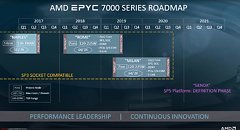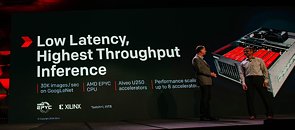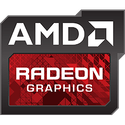
AMD CTO Teases Memory Upgrades for Revised Instinct MI300-series Accelerators
Brett Simpson, Partner and Co-Founder of Arete Research, sat down with AMD CTO Mark Papermaster during the former's "Investor Webinar Conference." A transcript of the Arete + AMD question and answer session appeared online last week—the documented fireside chat concentrated mostly on "AI compute market" topics. Papermaster was asked about his company's competitive approach when taking on NVIDIA's very popular range of A100 and H100 AI GPUs, as well as the recently launched GH200 chip. The CTO did not reveal any specific pricing strategies—a "big picture" was painted instead: "I think what's important when you just step back is to look at total cost of ownership, not just one GPU, one accelerator, but total cost of ownership. But now when you also look at the macro, if there's not competition in the market, you're going to see not only a growth of the price of these devices due to the added content that they have, but you're -- without a check and balance, you're going to see very, very high margins, more than that could be sustained without a competitive environment."
Papermaster continued: "And what I think is very key with -- as AMD has brought competition market for these most powerful AI training and inference devices is you will see that check and balance. And we have a very innovative approach. We've been a leader in chiplet design. And so we have the right technology for the right purpose of the AI build-out that we do. We have, of course, a GPU accelerator. But there's many other circuitry associated with being able to scale and build out these large clusters, and we're very, very efficient in our design." Team Red started to ship its flagship accelerator, Instinct MI300X, to important customers at the start of 2024—Arete Research's Simpson asked about the possibility of follow-up models. In response, AMD's CTO referenced some recent history: "Well, I think the first thing that I'll highlight is what we did to arrive at this point, where we are a competitive force. We've been investing for years in building up our GPU road map to compete in both HPC and AI. We had a very, very strong harbor train that we've been on, but we had to build our muscle in the software enablement."
Papermaster continued: "And what I think is very key with -- as AMD has brought competition market for these most powerful AI training and inference devices is you will see that check and balance. And we have a very innovative approach. We've been a leader in chiplet design. And so we have the right technology for the right purpose of the AI build-out that we do. We have, of course, a GPU accelerator. But there's many other circuitry associated with being able to scale and build out these large clusters, and we're very, very efficient in our design." Team Red started to ship its flagship accelerator, Instinct MI300X, to important customers at the start of 2024—Arete Research's Simpson asked about the possibility of follow-up models. In response, AMD's CTO referenced some recent history: "Well, I think the first thing that I'll highlight is what we did to arrive at this point, where we are a competitive force. We've been investing for years in building up our GPU road map to compete in both HPC and AI. We had a very, very strong harbor train that we've been on, but we had to build our muscle in the software enablement."





































